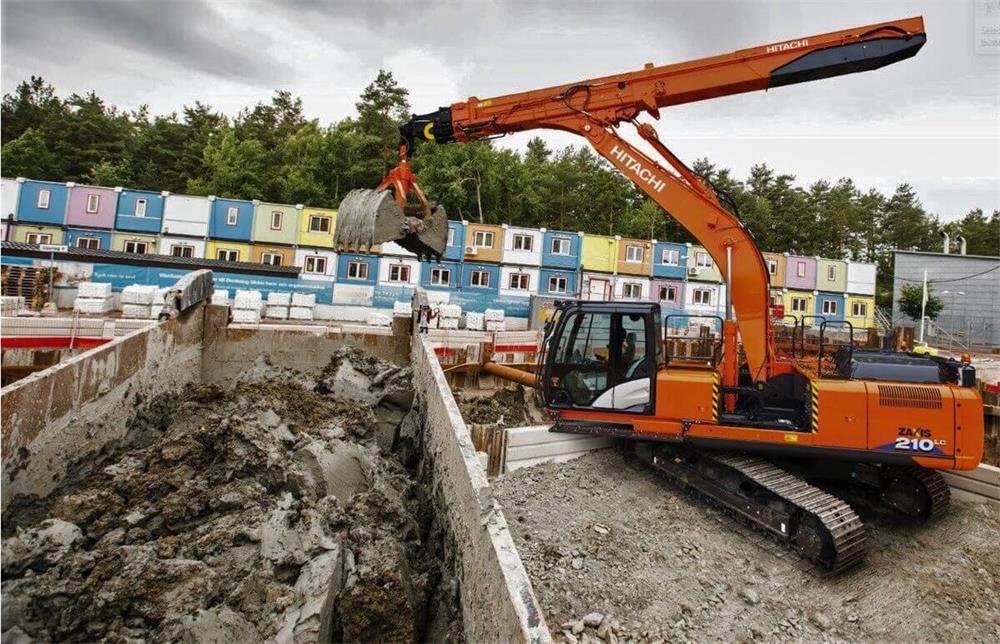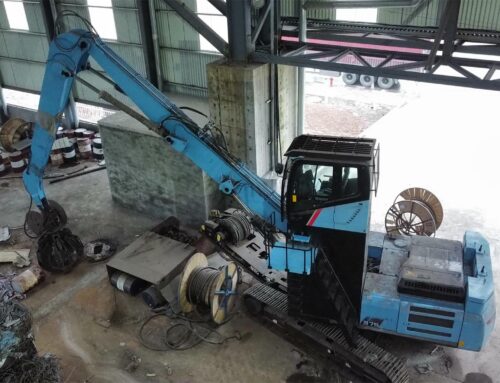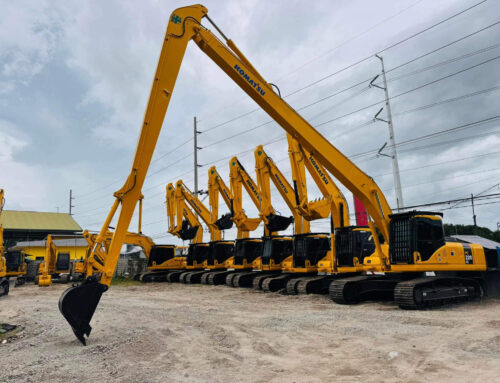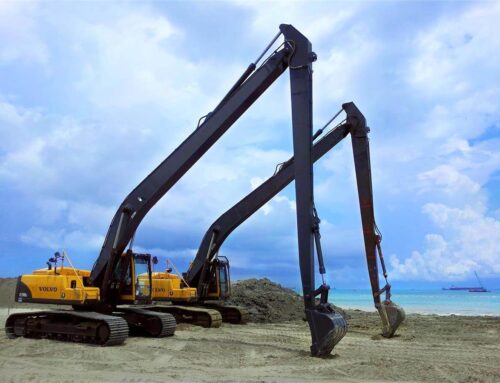In the ever-evolving world of construction and heavy machinery, excavators have proven to be indispensable tools, revolutionizing the way we shape our urban landscapes. At the heart of these versatile machines lies the telescopic arm – a technological marvel that adapts to a wide range of working conditions, from delicate precision tasks to robust earth-moving endeavors. In this exploration, we delve into the fascinating world of excavator telescopic booms and uncover the diverse working conditions in which they excel.
A Symphony of Hydraulics and Mechanics
Before we delve into the telescopic arm’s adaptability, it’s essential to understand its intricate design. At its core, the telescopic arm operates on a symphony of hydraulics and mechanics. A series of hydraulic cylinders extend and retract the arm’s nested sections, allowing it to achieve impressive reach and versatility. The mechanics of this system are designed to maintain stability and precision, making the excavator telescopic booms a masterpiece of engineering.
Urban Renewal: Navigating Tight Spaces
In bustling urban environments, where space is often at a premium, the excavator telescopic booms showcases its finesse. Whether it’s repairing water mains beneath narrow streets or renovating historical buildings hemmed in by modern structures, the excavator’s telescopic arm excels. The ability to extend and retract sections with precision means that construction crews can operate in confined spaces without compromising on safety or efficiency. This adaptability reduces the need for extensive manual labor, speeding up projects and minimizing disruptions to the surrounding area.
High-Rise Wonders: Reaching Skyscraper Heights
As urban landscapes continue to reach for the skies, so too must the machinery that shapes them. The telescopic arm of an excavator comes to the forefront when constructing towering skyscrapers or installing intricate façades. By extending its reach vertically, the arm can efficiently transport materials to great heights, eliminating the need for multiple cranes or complex pulley systems. This application not only enhances construction efficiency but also contributes to the overall safety of the project, reducing the risk associated with working at extreme heights.
Environmental Resilience: Tackling Hazardous Terrains
Beyond the concrete jungles, the excavator telescopic arms ventures into challenging and often hazardous terrains. From excavating in flood-prone areas to stabilizing slopes on mountainous terrain, this adaptable arm proves its mettle. The hydraulic-powered extension and retraction allow excavators to maintain a safe distance from unstable ground while still effectively carrying out essential tasks. This not only safeguards workers but also ensures that construction projects can progress in environments where traditional methods might be risky or inefficient.
Unearthing History: Archaeological Precision
In the realm of archaeology, where meticulous precision is paramount, the telescopic arm finds an unexpected role. When excavating historical sites or recovering ancient artifacts, the arm’s controlled extension and retraction enable archaeologists to delicately unearth hidden treasures without causing damage. Its ability to operate with finesse makes it an invaluable tool for preserving our past while advancing our present.
Natural Harmony: Ecosystem Restoration
The telescopic arm’s adaptability extends to ecological realms as well. Whether it’s re-establishing natural waterways, restoring wetlands, or rejuvenating degraded landscapes, excavators equipped with telescopic arms play a pivotal role. By selectively reaching into delicate ecosystems, the arm can reshape terrain, plant native vegetation, and assist in water management efforts. This minimally invasive approach supports the revival of biodiversity and fosters natural harmony.
Conclusion
The telescopic arm of excavators stands as a testament to human ingenuity and adaptability. Its prowess in navigating diverse working conditions – from the confines of urban spaces to the challenges of hazardous terrains – showcases the remarkable versatility of modern construction technology. As our world continues to evolve, these mighty arms will undoubtedly play an integral role in shaping the landscapes of tomorrow, proving once again that innovation knows no bounds.
Harnessing the Power of Automation: Future Frontiers
As technology continues to advance, the telescopic arm’s potential is poised to reach even greater heights through automation. Imagine excavators equipped with intelligent sensors, artificial intelligence, and remote control capabilities. Such innovations would amplify the telescopic arm’s adaptability, making it possible to perform intricate tasks with even greater precision and efficiency.
Autonomous excavators could revolutionize industries ranging from construction to disaster recovery. In post-disaster scenarios, where human intervention may be limited, these automated machines could play a crucial role in search and rescue efforts, clearing debris, and restoring vital infrastructure. The telescopic arm’s ability to navigate complex and unpredictable environments would be instrumental in addressing unforeseen challenges.
Environmental Sustainability: Redefining Construction Practices
In an era where environmental consciousness takes center stage, the telescopic arm contributes to more sustainable construction practices. Its adaptability allows for the careful extraction of resources, reducing waste and minimizing environmental impact. Furthermore, the telescopic arm’s versatility aids in the construction of energy-efficient buildings and the installation of renewable energy systems, such as solar panels and wind turbines.
A New Age of Exploration: Beyond Earth’s Boundaries
The ingenuity behind the telescopic arm’s design isn’t limited to our home planet. As humanity looks toward the stars, this adaptable technology could find its place in space exploration. Imagine excavators on distant planets, using telescopic arms to carefully uncover geological mysteries or construct habitats for future colonists. The principles that make the telescopic arm a powerhouse on Earth could translate to extraterrestrial applications, reshaping the way we approach interplanetary construction and exploration.
Challenges and Ethical Considerations
Despite its remarkable adaptability, the telescopic arm isn’t without challenges and ethical considerations. As technology advances, there’s a need to address issues related to automation, safety, and equitable access to these innovations. Ensuring that autonomous excavators are programmed to prioritize human safety and adhere to ethical guidelines will be paramount in their integration into various industries.
Moreover, the excavator telescopic arms‘s potential to reshape environments also raises questions about responsible land use and ecological impact. Striking a balance between progress and environmental stewardship will require careful planning and cooperation between industries, regulatory bodies, and environmental experts.
Conclusion
The excavator telescopic booms has proven itself as an engineering marvel that seamlessly adapts to a plethora of working conditions, from the narrow alleyways of urban jungles to the rugged terrains of natural landscapes. Its remarkable versatility, combined with the potential of automation and its impact on sustainability, sets the stage for a future where construction practices are not only efficient but also environmentally conscious.
As we look ahead, it’s crucial to continue innovating, refining, and expanding the telescopic arm’s capabilities. By embracing new technologies, addressing challenges, and considering the ethical implications, we can harness the full potential of this extraordinary tool. Whether on Earth or among the stars, the telescopic arm will continue to play a pivotal role in shaping the world around us, propelling us into a future where human ingenuity knows no bounds.









Leave A Comment